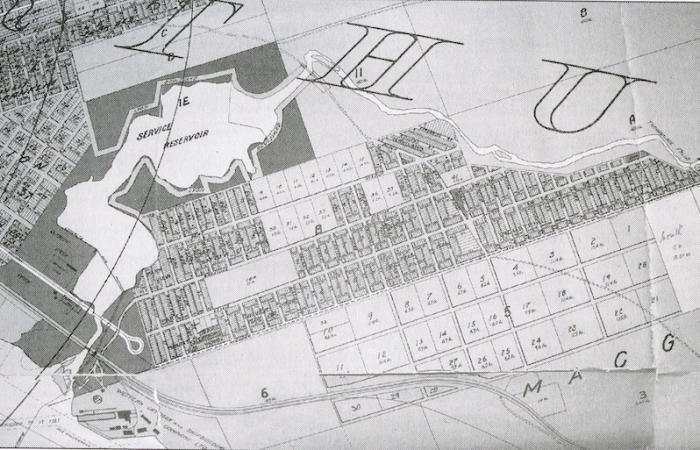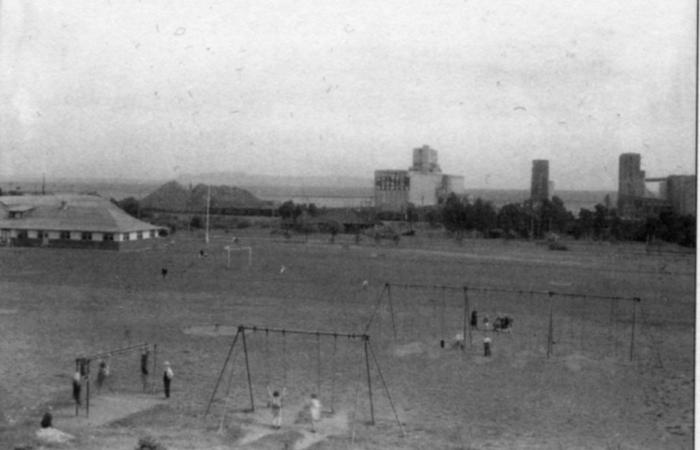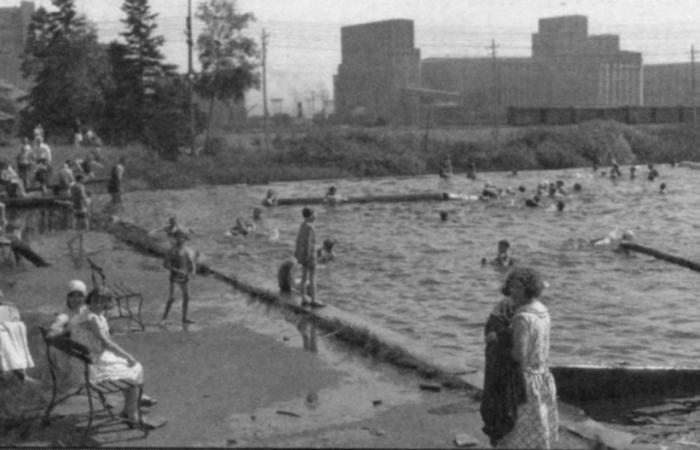Current River has grown up in the shadow of Port Arthur now Thunder Bay North. The neighbourhood started as land speculation for mining and the CPR, it became a vibrant community and one of Thunder Bay’s original “streetcar suburbs”. Back in 1857, the Red River Expedition came to Fort William to find a route to western Canada. The Current River was surveyed by imon J. Dawson as a winter route from Dog Lake to Lake Superior. He remarked that, “A better road site cannot be found along side of this little river than anywhere.”
However, the first land-based route to Canada’s west was decided upon over Dawson’s route along the Current River Thus, in 1867, construction of Dawson Road began. It would travel from Prince Arthur’s Landing to the Red River settlement.
The Walking and Horse-drawn Era
Two years earlier, in 1865, Peter McKellar discovered silver just east of the Current River The next year, he opened the Shuniah Silver Mines and constructed two small settlements there for mining operations. A remnant of the road leading to that mine is known as Shuniah Street. Part of the access road to the other silver mine two miles away, the Thunder Bay mine, is Black Bay Road. A forest fire swept through the area in 1875 destroying everything, so Current River’s first settlement had to be rebuilt. By 1889, land stretching from the Current River north past Black Bay Road had been surveyed. It became the first residential area of what would become the City of Thunder Bay’s suburb of Current River. This was the first phase of development, the Walking and Horse-drawn Era, which lasted until the 1880s. Further growth was also hindered by the fact that the only way into the area from Port Arthur was along Shuniah St. to Black Bay Rd.
The Electric Streetcar
The second phase of the development of Current River, which lasted until World War I, was the advent of the electric streetcar powered by partial damming of Current River People could now get to work and run errands with a minimum of planning. They built larger houses, too. Streetcar expansion into Current River sparked development of industry, as well. Workers could now live near where they worked while having convenient access to the benefits of the nearby city. During May of 1907, tragedy struck. After days of rain, the dam gave way sending a wall of water through the community washing away buildings, a streetcar line and a railway bridge. A passenger train crossing the bridge narrowly missed calamity, but the freight train behind it wasn’t as lucky. The bodies of the five crew members were found in the train wreckage the next day. The loss of people and property was substantial. However, the community would pick up the pieces and once again rebuild. Western Dry Dock opened in 1910 and what became known as Provincial Paper, the area’s first paper mill, opened in 1912. More industries would follow.
The Recreational Auto Era
The third phase of development was termed the Recreational Auto Era from 1920 to 1940. Popularity of the automobile quickly grew. It allowed people, for the first time, to buy a house based on their lifestyle rather than on distance from work. This period saw the largest growth of residences, schools and churches. Streetcar lines remained the same and homes were still built within walking distance of the routes. The Grenville Avenue business area started with many grocers, meat markets, barber shops and hair salons opening up. The original subdivisions of Parkmount, Parkview, Bayview and Gresley Park filled in.
After World War II
The fourth phase of growth that began after World War II was termed the Freeway Auto Era. It was sparked by the return of war veterans and the baby boom which lasted until the 1970s. More houses were built. Old neighbourhoods were filled in and new ones created. The Grenville Avenue business district expanded, too. It now provided furniture, appliances, hardware, a gas station, a bank, a hotel and restaurants. This period is responsible for urban sprawl. This is also the period that saw the Current River neighbourhood come to maturity.
Modern Current River
Modern Current River, the period from the 1980s until now, has seen fairly stagnant growth but it continues to be one of the most vibrant of residential communities. While nestled in the shadow of the City of Thunder Bay as a whole by the Current River and Boulevard Lake, the suburb of Current River continues to offer its own small town appeal. Maybe that’s why many families moving to Thunder Bay and looking for a quiet neighbourhood choose Current River.







